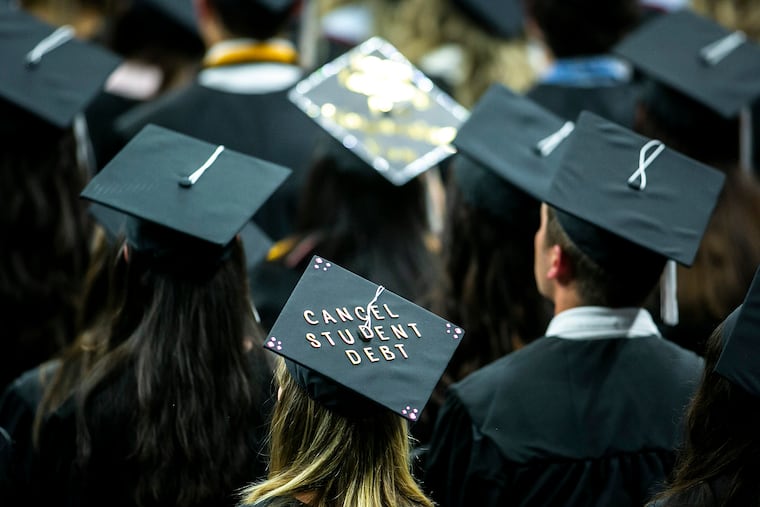The end of the student loan payment moratorium comes at a tough time for the economy
Given the economic fallout from the end of the payment moratorium, getting monetary policy right will be considerably more difficult.

We have suffered many economic slings and arrows in recent years: the pandemic, the war in Ukraine, a banking crisis after the failure of Silicon Valley Bank, and the recent harrowing political drama over the Treasury debt limit. Next up is the end of the student loan payment moratorium later this summer.
The moratorium has been in place since March 2020, when the pandemic hit. It came in the blizzard of policy steps taken by lawmakers to help financially hard-pressed Americans navigate the economy-wide shutdown imposed to suppress the spread of COVID-19.
Other financial support, from enhanced unemployment insurance to substantial food and rental assistance, has long since expired as the pandemic wound down. But the moratorium on student loan payments was extended several times, most recently late last year.
There will not be any more extensions. As part of the deal struck between President Joe Biden and Congress to suspend the Treasury debt limit earlier this month, the president must end the moratorium once and for all by September. An estimated 22 million student loan borrowers must resume making average monthly payments of close to $275.
This will be tough for many borrowers who are younger or have lower incomes.
Many have used the extra few hundred dollars a month to make ends meet given the painfully high inflation. Even though inflation has moderated over the past year, the typical American household must shell out almost $300 more a month to buy the same goods and services they did a year ago.
Many student loan borrowers will be forced to make painful financial choices. They will have to cut their spending, try to borrow more using credit cards or buy-now-pay-later services, or — worse — not pay all of their bills on time.
This poses a substantial hardship on the millions of student loan borrowers, but in typical times ending the moratorium would not have been a serious threat to the broader economy.
Twenty-two million borrowers paying $275 more a month amounts to a $70 billion increase in payments annually, equal to about 0.25% of the nation’s overall GDP.
Thus, instead of the economy growing say 2%, as it would in a reasonably good year, it would grow only 1.75%. Not great, but not by any means an existential threat to the economy.
Of course, current economic times are anything but typical. Indeed, the timing for the end of the moratorium is especially bad. The Federal Reserve has been jacking up interest rates for more than a year in an effort to throttle back the economy and quell the high inflation. The economy is weak and especially vulnerable to a recession in coming months.
The Fed will surely take this into account when setting interest rates, and it is one more reason the rate hikes are likely almost over. Yet, given the economic fallout from the end of the payment moratorium, getting monetary policy right — raising rates high enough and fast enough to rein in inflation, but not too high and too fast that it undermines the economy — will be considerably more difficult.
The economic sting could be attenuated somewhat, since the Biden administration may be able to provide transitional relief allowing payments to take longer to resume in full.
The administration has also been encouraging borrowers to move into so-called income-driven repayment plans. Borrowers in these plans can cap the percentage of their incomes going to loan payments, and if after making payments for a number of years they have not been able to repay their debt, the debt is forgiven.
There is also an outside chance the Supreme Court decides in favor of President Biden’s student loan forgiveness plan. As of Thursday, there had been no ruling.
Under the plan, most student loan borrowers would have up to $20,000 of their debt wiped clean. This would eliminate as much as $400 billion in student loan balances, about a quarter of all the debt outstanding. This by itself would reduce student loan payments, offsetting much of the increase in resumed payments.
The next few months will be difficult ones for student loan borrowers and the broader economy. Our economy has been admirably resilient despite all, and should be able to weather the end of the student loan payment moratorium. But this would be a good time to buckle in.
Mark Zandi is chief economist for Moody’s Analytics.